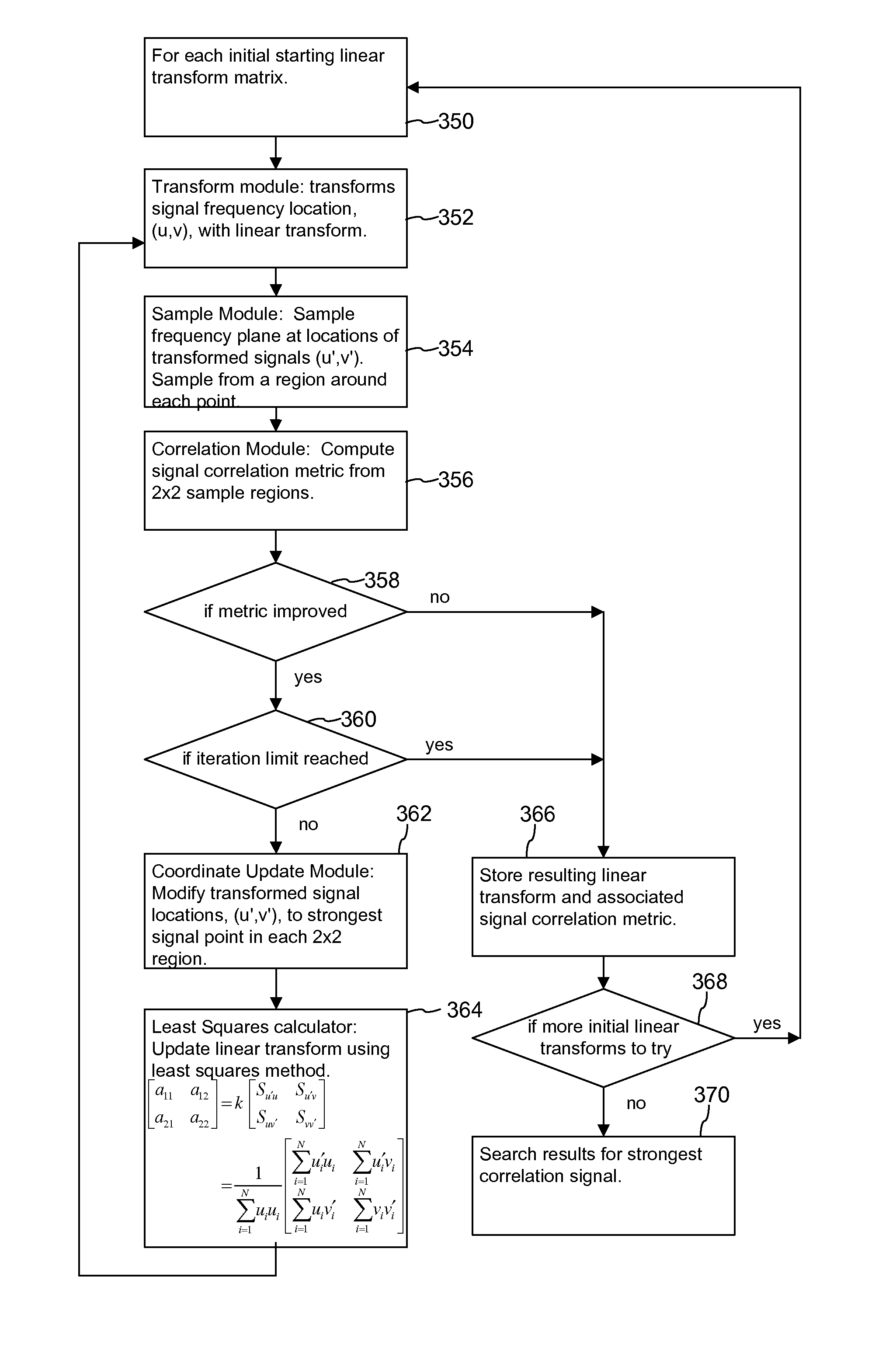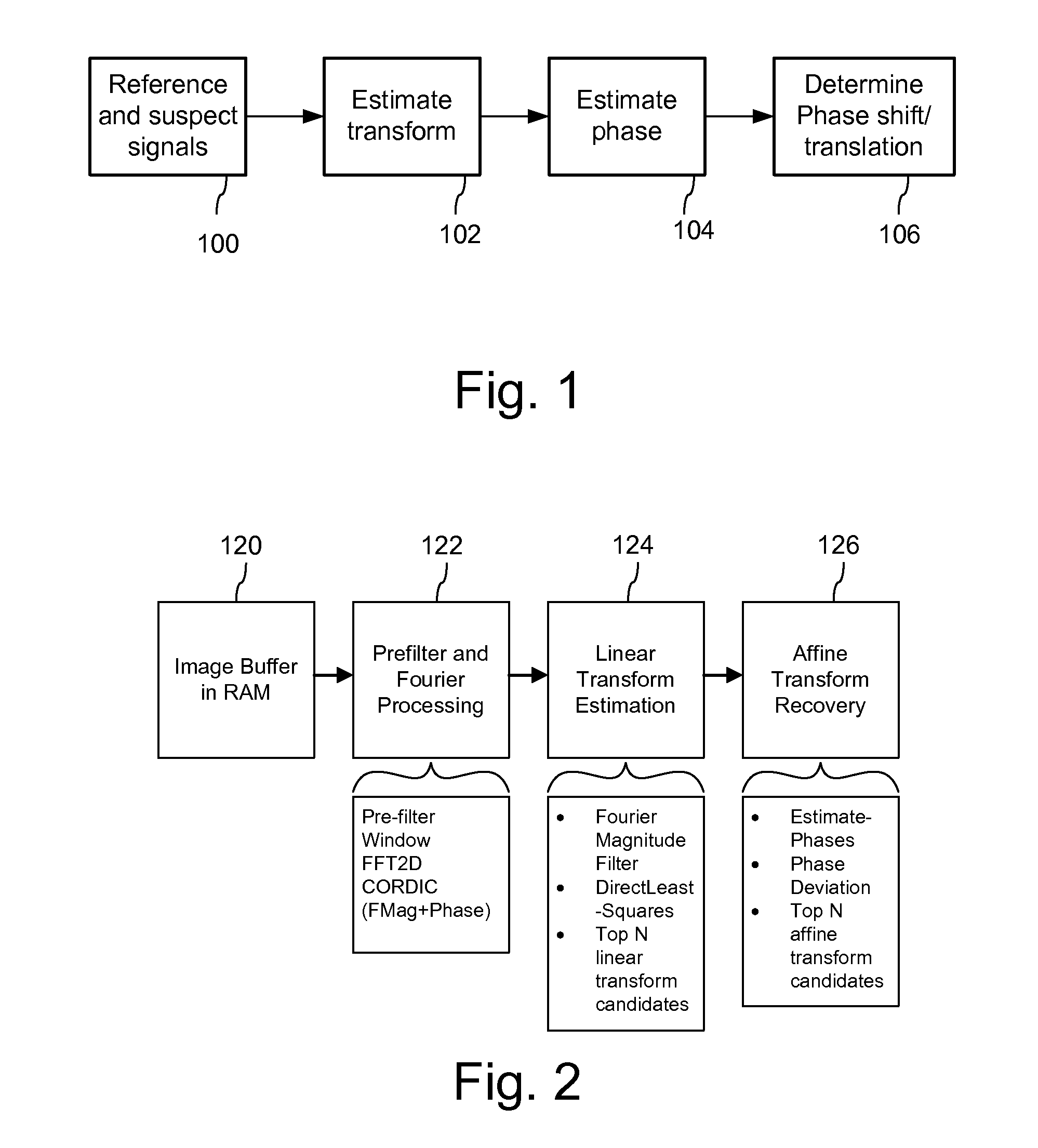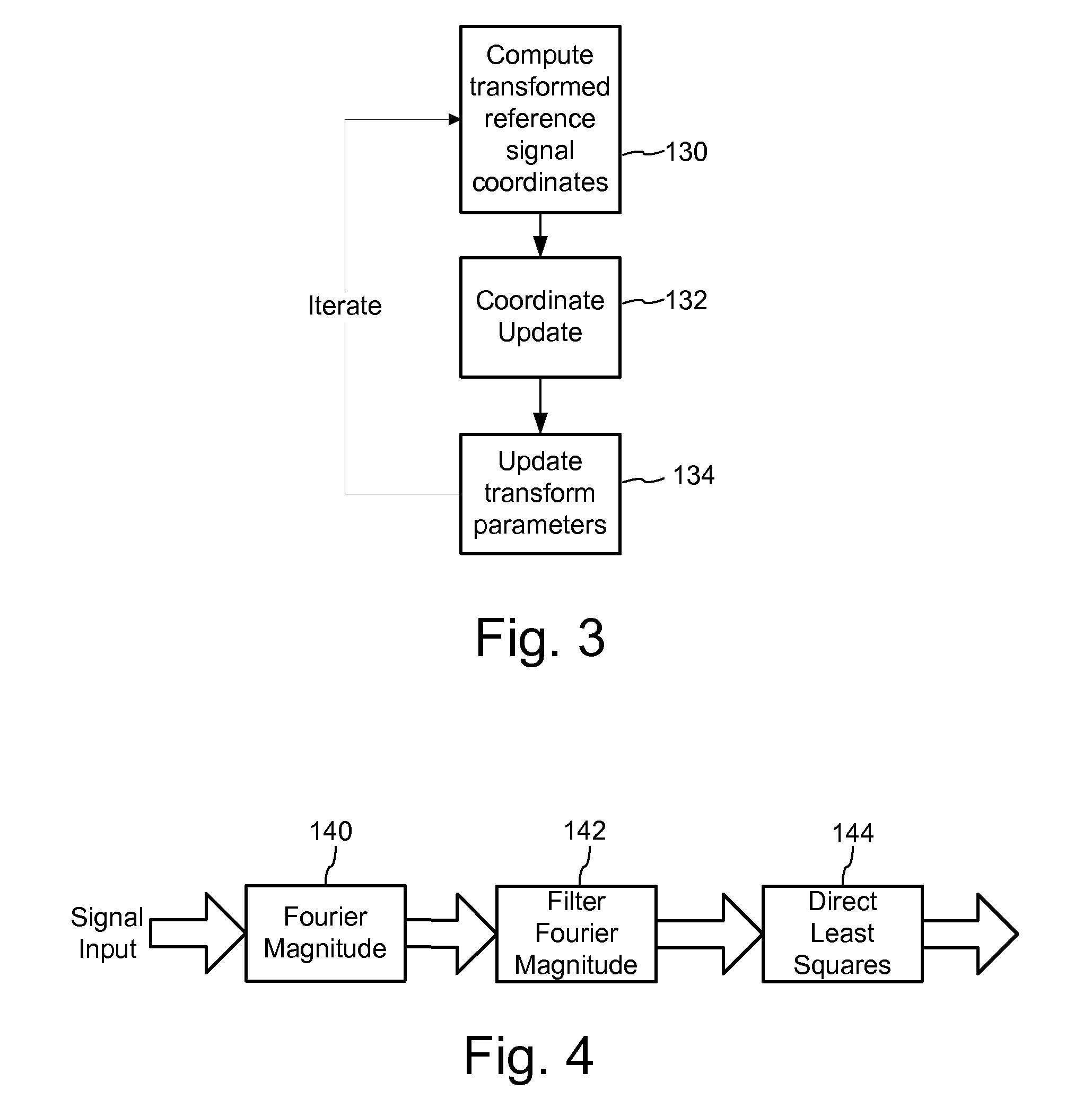Signal Processors and Methods for Estimating Transformations Between Signals with Least Squares
a signal processor and signal technology, applied in the field of signal processing, can solve the problems of distorted signals, more difficult to accurately detect, recognize or match the reference signal with its counterpart in the suspect image, and difficult to achieve the effect of accurately and efficiently computing, accurately detecting and recognizing
- Summary
- Abstract
- Description
- Claims
- Application Information
AI Technical Summary
Benefits of technology
Problems solved by technology
Method used
Image
Examples
Embodiment Construction
[0035]FIG. 1 is a block diagram illustrating an implementation of a process for determining a transformation between a reference and suspect signal. We refer to this process as a transformation recovery process because it recovers a transformation of the reference signal from a suspect signal captured within a device. In particular, we have implemented this method to recover the transform required to align the suspect signal with the reference signal. The process takes as input a discrete representation of a known reference and the captured suspect signal 100 and determines an estimate of a transformation, which when applied to the reference signal, would approximate the suspect signal. The transformation recovery process is sub-divided into stages 102-106 in which the first stage provides an estimate of a transform (e.g., a linear transform described by 4-D vector of linear transform parameters (or 2 by 2 linear transform matrix)) and the subsequent stages refine the estimate by fi...
PUM
 Login to View More
Login to View More Abstract
Description
Claims
Application Information
 Login to View More
Login to View More - R&D
- Intellectual Property
- Life Sciences
- Materials
- Tech Scout
- Unparalleled Data Quality
- Higher Quality Content
- 60% Fewer Hallucinations
Browse by: Latest US Patents, China's latest patents, Technical Efficacy Thesaurus, Application Domain, Technology Topic, Popular Technical Reports.
© 2025 PatSnap. All rights reserved.Legal|Privacy policy|Modern Slavery Act Transparency Statement|Sitemap|About US| Contact US: help@patsnap.com



